| Amount Per 1 bagel | |||
| Calories | 250 Kcal (1047 kJ) | ||
| Calories from fat | 13.5 Kcal | ||
| % Daily Value* | |||
| Total Fat | 1.5g | 2% | |
|---|---|---|---|
| Sodium | 510mg | 21% | |
| Potassium | 75mg | 2% | |
| Total Carbs | 53g | 18% | |
| Sugars | 3g | 12% | |
| Dietary Fiber | 2g | 8% | |
| Protein | 8g | 16% | |
| Iron | 2.7mg | 15% | |
| Calcium | 100mg | 10% | |
* Percent Daily Values are based on a 2000 calorie diet. Your daily values may be higher or lower depending on your calorie needs.
Find out how many calories should you eat.
Ingredients And Nutrition Overview
Best
choice Good
choice Poor
choice Avoid
it!
choice Good
choice Poor
choice Avoid
it!
-
WeightWatchers Points: 4.7, PointsPlus: 7, SmartPoints: 7
WeightWatchers Points are estimated by carbohydrates, fats, protein and fiber in product. They are not an affirmation of better quality or nutritional value of the product or its manufacturer. Only way to count for dieters. Less points are better.
Read more at Weight watchers diet review -
Mostly whole grains here
Whole grains are a great source of fiber and other nutrients. Fiber is one of the most important things we need in our diet. Here is what fiber does for you: - Fiber helps your body process food from one end to the other. - Fiber plays an important role in mediating the blood sugar spikes from carbohydrate-rich food. Whole grains are not the only way to get fiber, BUT by choosing them instead of processed grains you've made a smart choice. If you'd like to eat a bit better, try for something with 100% whole grains. Next time try for 100% whole grains...
-
Contains phosphoric acid
Phosphoric acid is an additive that gives soda its tangy flavor and makes it more acid than lemon juice or vinegar. A vast amount of sweetener is then used to mask and balance the acidity. Phosphoric acid has been linked to lower bone density in some epidemiological studies, including a discussion in the American Journal of Clinical Nutrition. --- Sources: Calvo MS, Tucker KL. Is phosphorus intake that exceeds dietary requirements a risk factor in bone health? Ann N Y Acad Sci. 2013 Oct;1301:29-35 Tucker KL, Morita K, Qiao N, Hannan MT, Cupples LA, Kiel DP. Colas, but not other carbonated beverages, are associated with low bone mineral density in older women: The Framingham Osteoporosis Study. Am J Clin Nutr. 2006 Oct;84(4):936-42. Wyshak G. Teenaged girls, carbonated beverage consumption, and bone fractures. Arch Pediatr Adolesc Med. 2000 Jun;154(6):610-3. McGartland C, Robson PJ, Murray L, Cran G, Savage MJ, Watkins D, Rooney M, Boreham C. Carbonated soft drink consumption and bone mineral density in adolescence: the Northern Ireland Young Hearts project. J Bone Miner Res. 2003 Sep;18(9):1563-9.
-
For dieters: FoodPoints value is 6
* FoodPoints are calculated by Fooducate based on fats, carbs, fiber, and protein. They are not an endorsement or approval of the product or its manufacturer. The fewer points - the better.
-
Contains fully hydrogenated oils
Although these oils are not trans fat, they do cause an oil to contain more saturated fats than it originally had. Which is not good. ---- Sources: Lefevre M, Mensink RP, Kris-Etherton PM, Petersen B, Smith K, Flickinger BD. Predicted changes in fatty acid intakes, plasma lipids, and cardiovascular disease risk following replacement of trans fatty acid-containing soybean oil with application-appropriate alternatives. Lipids. 2012;47(10):951-62. FAQs about Fats - American Heart Association
-
Contains high fructose corn syrup
High fructose corn syrup (HFCS) is a highly processed ingredient manufactured from surplus corn, and yielding a cheap replacement to table sugar. In the early 1980’s many food manufacturers started using it instead of sugar as a cost cutting measure. That’s about the same time obesity rates started to skyrocket in the US. Most scientists agree that HFCS is no better and no worse than plain sugar, though some newer studies seem to find the two affect the metabolism differently. Consumption of both should be drastically limited. ---- Sources: Bray GA, Nielsen SJ, Popkin BM. Consumption of high-fructose corn syrup in beverages may play a role in the epidemic of obesity. Am J Clin Nutr. 2004;79(4):537-43. Berkey CS, Rockett HR, Field AE, Gillman MW, Colditz GA. Sugar-added beverages and adolescent weight change. Obes Res. 2004;12(5):778-88. Johnson RJ, Segal MS, Sautin Y, Nakagawa T, Feig DI, Kang DH, Gersch MS, Benner S, Sánchez-Lozada LG. Potential role of sugar (fructose) in the epidemic of hypertension, obesity and the metabolic syndrome, diabetes, kidney disease, and cardiovascular disease. Am J Clin Nutr. 2007;86(4):899-906. Schulze MB, Manson JE, Ludwig DS, Colditz GA, Stampfer MJ, Willett WC, Hu FB. Sugar-sweetened beverages, weight gain, and incidence of type 2 diabetes in young and middle-aged women. JAMA. 2004;292(8):927-34. Ludwig DS, Peterson KE, Gortmaker SL. Relation between consumption of sugar-sweetened drinks and childhood obesity: a prospective, observational analysis. Lancet. 2001;357(9255):505-8. James J, Thomas P, Cavan D, Kerr D. Preventing childhood obesity by reducing consumption of carbonated drinks: cluster randomised controlled trial. BMJ. 2004;328(7450):1237.
-
Highly Processed!
This product is highly processed. If you'll take a look at its ingredient list, you'll discover new words to add to your vocabulary. Many of theses ingredients are required to increase the shelf life of the product and improve the flavor that disappears when food is not fresh.
-
Contains azodicarbonamide. Learn more
Azodicarbonamide is a popular dough conditioner. It also bleaches the flour (makes it whiter). It's considered safe in the US at up to 45 parts per million, but is banned from use in Europe because studies showed it could cause asthma or allergic reactions. ---- Sources: Kim C, Cho J, Leem J, Ryu J, Lee H, Hong Y. Occupational asthma due to azodicarbonamide. Yonsei Med J. 2004; 45-2: 325-329. Normand JC, Grange F, Hernandez C, Ganay A, Davezies P, Bergeret A, Prost G. Occupational asthma after exposure to azodicarbonamide: Report of four cases. Brit J Ind Med. 1989; 46: 60-62. Vlastos D, Moshou H, Epeoglou K. Evaluation of genotoxic effects of semicarbazide on cultured human lymphocytes and rat bone marrow. Food Chem Toxicol. 2010; 48: 209-214. Ye J, Wang X, Sang Y, Liu Q. Assessment of the determination of azodicarbonamide and its decomposition product semicarbazide: Investigation of variation in flour and flour products. J Agr Food Chem. 2011; 59: 9313-9318.
-
A good natural source of iron
The Iron in this product comes from real food, not as a fortified ingredient. This is important because it means you are getting hundreds of additional nutrients from the real food.
-
Contains glycerides
Mono and diglycerides are commonly used in processed foods to maintain stability in liquid products and "improve" quality in baked goods. These glycerides could be created using both hydrogenated and partially hydrogenated oils or animal fats. In theory, this may transfer a small amount of trans fats into the product. The glycerides are synthesized into phosphates by reacting with phosphorus pentoxide, a potential environmental hazard. But that's only part of the problem . . . The presence of mono and diglycerides should discourage you from buying a product for more than just these reasons: their inclusion in a product indicates that it is industrially processed. Choose products without mono and diglycerides not only for health reasons, but because you are getting a better quality food item overall.
-
Duck feathers & human hair in here?
L-cysteine, found in this product, is an additive made from duck feathers or human hair. It is used as a dough conditioner and to extend shelf life. There are synthetic versions made from non-animal parts - these are more expensive, but well worth it for consumers who do not want duck feathers or human hair in their food. Check the label. Or better yet, avoid this needless additive. Choose fresh baked breads that use natural preservatives, if any at all. If you have a problem with bread spoilage, freeze your bread and toast or thaw to reheat.
-
Learn about corn syrup, found here
Corn syrup is often used as a sweetener in processed food. It is NOT THE SAME as high fructose corn syrup. Don't be fooled when looking up the amount of sugar a product contains if corn syrup is listed as an ingredient. This is because corn syrup contains 50% sugar, and 50% of another form of carbohydrate known as ""oligosaccharides"", which is pretty close to sugar. If a product has less sugar than you think it should, but contains corn syrup in the ingredient list, you'll know that the missing carbs are those oligosaccharides, not much better.
-
Contains calcium propionate. Learn more
Calcium propionate (or calcium propaonate) is a preservative that inhibits mold and bacterial growth. Considered safe, but in the early 1990's it was linked to attention deficit disorder in children.
-
What is Sodium Stearoyl Lactylate?
Sodium Stearoyl Lactylate is a chemical similar to lactic acid used in the processing of food. The FDA and consumer organizations have found it safe. We don't think it's dangerous, however, it is an indicator that the product is processed. We like that it's biodegradable, but still . . . it provides no nutritional value and few consumer benefits. When buying food, keep in mind that the presence of Sodium Stearoyl Lactylate means that this item is processed. It makes bread look big and fluffy, icing look light and pillowy, and reduces the amount of fat and sugar needed in baked goods. Sodium Stearoyl Lactylate makes processed food cheaper, more beautiful and gives it a more appealing texture. We recommend avoiding it if because we like food to be processed as little as possible . . .
You Might Also Like
% RDI of Main Nutrition Facts
13%
of RDI* (250 calories) 240 g
-
Cal: 12.5 %
-
Fat: 2.3 %
-
Carb: 17.7 %
-
Prot: 16 %
-
0%25%75%RDI norm*
Calories Breakdown
- Carbs (80.9%)
- Fat (6.9%)
- Protein (12.2%)
Get Your Recipe of Health!
Follow RecipeOfHealth on Facebook!


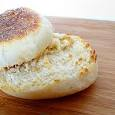
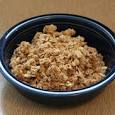
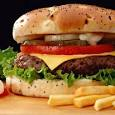
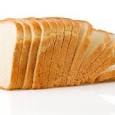
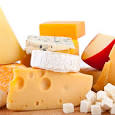

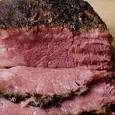
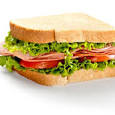
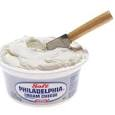

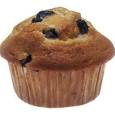
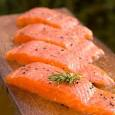
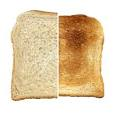
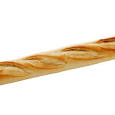


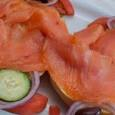
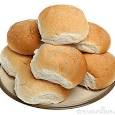
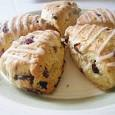














Add your comment